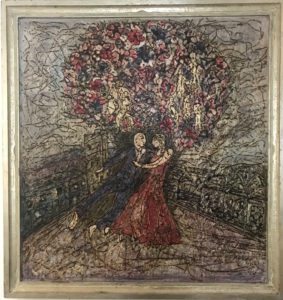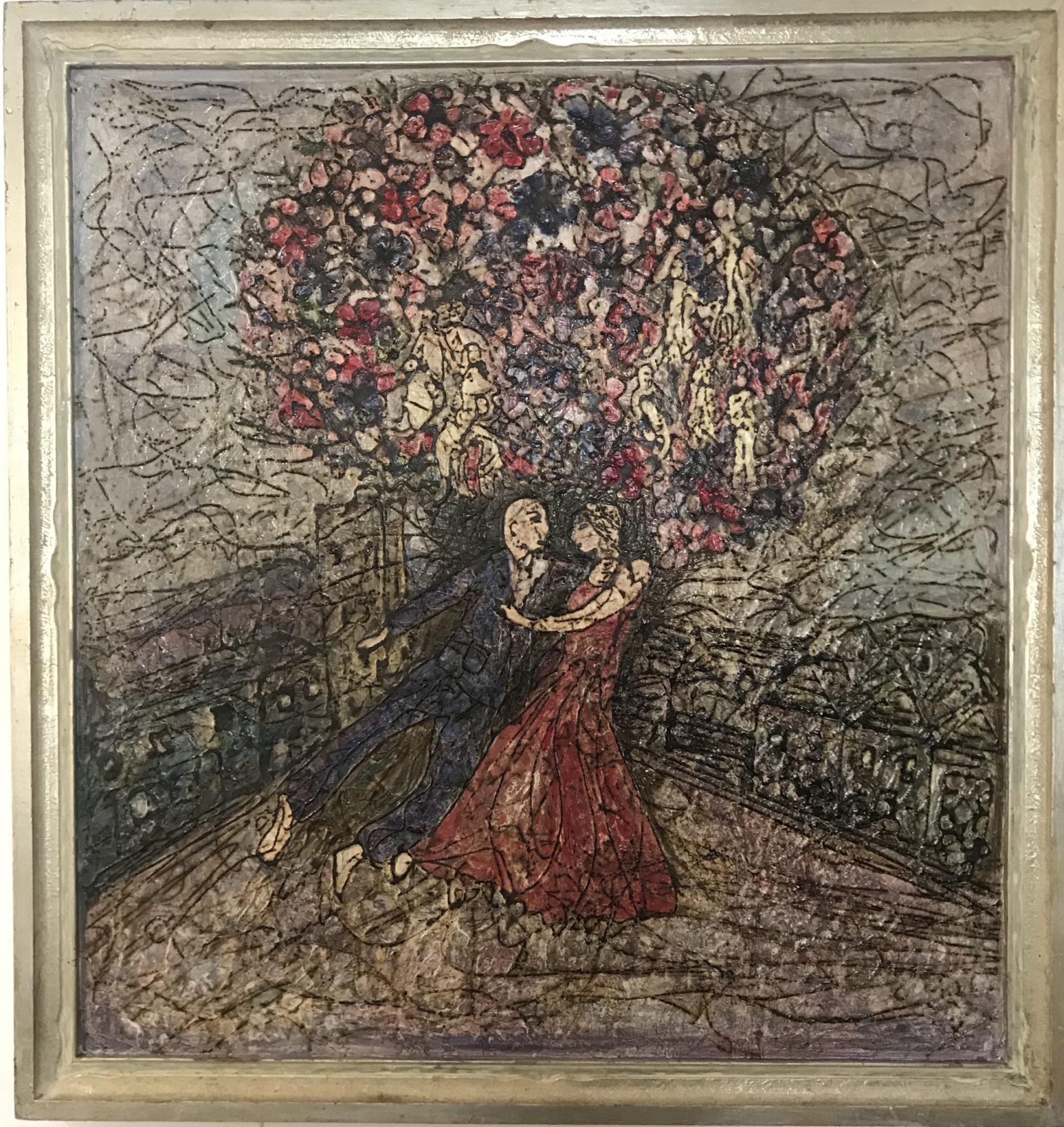 This week’s blog: http://delphapainting.blogspot.com/2020/06/everyone-loves-chagall.html
This week’s blog: http://delphapainting.blogspot.com/2020/06/everyone-loves-chagall.html
June 1st is my 1st wedding anniversary with my husband Nigel. Each morning I am greeted by the sight of not only my beautiful husband but by Wedding Gift, the painting I made for him that hangs opposite our bed. In it we are flying above the cottages and the church tower in the village where we live, with a family tree of flowers (crimson, dark pink, royal blue and purple anemones), that bunch around abstracted family figures. The Chagallesque references in this painting are for my husband who loves Chagall and the something romantic in every day life that Chagall evokes.
I recognise in Chagall’s work many things a relationship with about these religious and Renaissance paintings, as much as folk art. I feel, perhaps rather than understand, the balance of colours creating movement around the familiar and a composition that uses shapes and vegetal motifs to build a sense of flow around figures that don’t just float, they fly. In front of his paintings I am a child dreaming about flying. This sensation of power and freedom defies base perspective and gives voice to drama and physical suspense in the pictorial frame. What is the story? Well for us – love of course.
Here appropriation is used with simple twists and a joy in creating additional texture. Using the same process used for Wedding Gift, I often re-surface old canvases and create layers of bitumen and gesso that create not only texture but a kind of palimpsest, a phrase taken from old manuscripts involving the process of erasing, obliterating, and re-building texts. Wollheim writes of painting as having the capacity to corporealize its surface. Paintings have the power to become anthropomorphic traces of the human body. My fascination with the body and live art theory has always created a sense for me that painting is about embodiment – embodying a real person, or real people with stories and feelings. That texture is movement, skin and experience. Can texture and visceral mark making engender empathy and understanding?
Herwitz in his book about aesthetics (2008, p105) writes of pictorial ‘doubleness’, and ‘two-foldness’, which are words to describe the interaction between representational and expressive meanings that can be made with textural or corporeal effects. He goes on to write about kinaesthesia and the possibility that painting can make the viewer aware of his/her own body as a feeling. Painting that pulls us in and makes us feel can engender new ways of thinking – about ourselves and others.
I am currently working on something I admit is inspired by Chagall’s Triumph of Music. I love the concept of this painting made for a theatre ceiling (the Paris Philharmonic) and as we imagine physically stretching our necks to see the magnificent colours, movement, sweeping lines, and those dramatic figures we re-image and re-imagine relationships between ourselves, others and time.
I love to think of painting as a third space in which we are swept off our feet into feeling ourselves in another time and place, shifting in-between with sensual intimacy.
I look at Wedding Gift this morning feeling just as I did a year ago.
